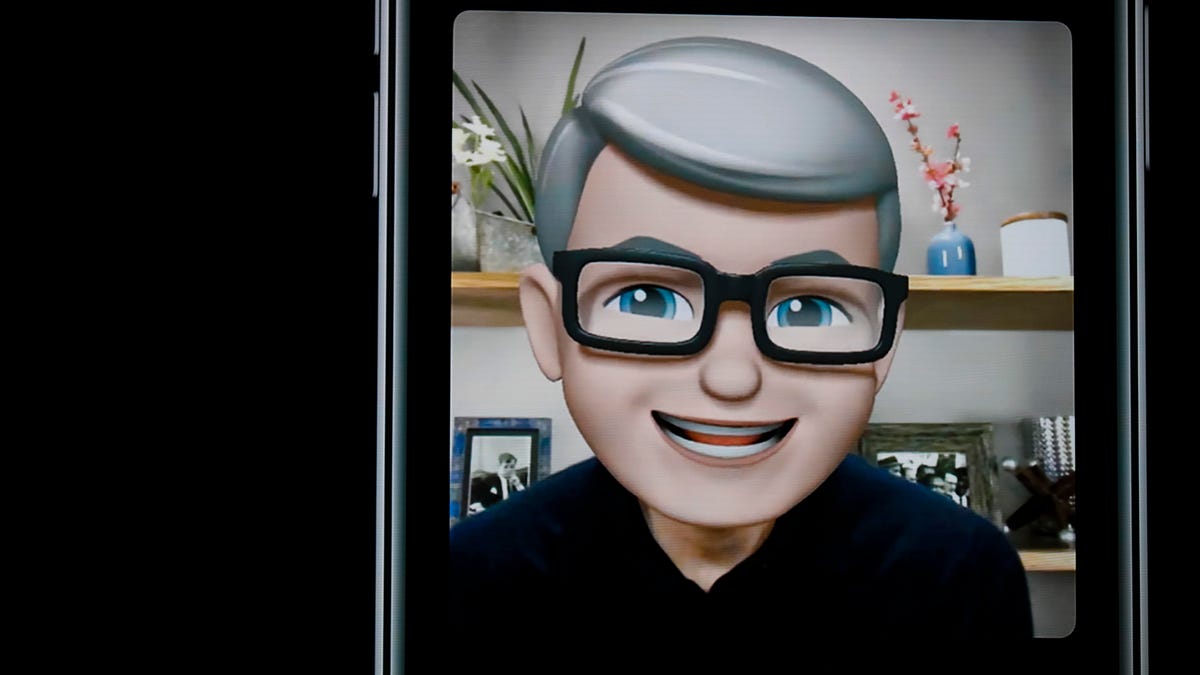We tried out Apple Memoji on iOS 12. They're already pretty great
Sorry, Samsung. Apple may have nailed it.

Even Tim Cook has made a Memoji.
Everyone's making avatars now: Nintendo started it with its Mii in 2006, on the wildly popular Wii console. Microsoft quickly "borrowed" that idea for Xbox Avatars. Bitmoji -- first an independent company, later purchased by Snap -- popularized the personalized emojis on mobile devices. And Apple's Animoji, Samsung's AR Emoji and Facebook's Oculus VR avatars all followed.
In that light, Apple's new Memoji are hardly surprising. But what they are is pretty fun.
Memoji made up one of the more lighthearted segments of the keynote presentation at Apple's Worldwide Developers Conference in San Jose, California, where the company showed off the additions and changes to its software systems that run devices like the iPhone or Mac.
They're a make-your-own avatar toolkit expanding off Apple's Animoji, which launched on the iPhone X in November. The feature works by scanning your face and letting your chosen 3D character mimic your facial movements and expressions. Instead of unicorns or robots, Apple's new Memoji are meant to look like you.
They'll be available on the iPhone X and its high-end successor, or successors, when iOS 12 hits the market later this year. The iPhone and iPad software update also will include new Animoji, like a T. rex and a ghost, and you'll even be able to stick out your tongue (something that apparently is difficult to do on these digital avatars. In the case of Samsung's AR emoji, sticking out your tongue doesn't work).
What does an @Apple Memoji look like? Here’s mine from #wwdc18 #wwdc. (And yes, I know the hair is too short) pic.twitter.com/iOjD3i0FWP
— Shara Tibken (@sharatibken) June 5, 2018
We got to play with Memoji and make our own on Monday at Apple's WWDC . It works well even with little time to fully customize the avatar. It's weird, but people probably will love using it. Here's what we noticed in our first quick demo.
There are lots of personalizations, but they all look bubbly-cartoony
Headgear, skin color, hairstyle, eye wear, nose size and so on: There are trillions of combinations that are aimed to be largely gender-neutral. Unlike with Samsung's AR Emoji, you never have to specify if you're a man or a woman when setting up the Memoji. You do, however, have to make your Memoji yourself: There aren't any auto-generating tools that try to match your face, like with Samsung's avatars.
There are many more hairstyle options than with Samsung's AR Emoji -- including curly locks and styles of all lengths and colors -- and you don't have to worry about your clothing, since Memoji are just floating heads.
One thing we're already noticing from Apple's WWDC presentation and our own experience is that the faces all have a similar cartoony youth to them. The variations between Memoji aren't as wild as they can be with Nintendo's Mii or Oculus' VR avatars. It's really the hair and other features where you differ, not your overall facial appearance.
Shara crafted a pretty convincing Memoji of herself, though. And then we took turns using that avatar.
Face control works as well as Animoji
Apple's advantage with Memoji is that face-tracking controls on Animoji for iPhone X are already good, and they're similarly strong with Memoji. We both tried puppeting Shara's face, which was extremely strange. We made Shara's Memoji talk, change facial expressions and stick out its tongue.
For comparison, here’s my @Apple Memoji next to my @Samsung AR Emoji and my @Snap @Bitmoji. #wwdc #wwdc18 pic.twitter.com/A7QcEmKRvO
— Shara Tibken (@sharatibken) June 5, 2018
You can record longer clips, use the Memoji and Animoji for FaceTime, or create bizarro Memoji heads on human bodies
You can do more things with Memoji (and Animoji) in iOS 12, including placing the Memoji over your own face (or someone else's for weird AR selfie effects). FaceTime supports them in group chats of up to 32 people, and the Camera app will take selfies and record videos.
The uncanny Memoji moment came when Scott tried talking with Shara's face on his head, which is as terrifying as you'd imagine. It's surreal seeing your face on someone else's body, or in Scott's case, seeing his expressions on someone else's face.
You, too, can look forward to creating such weird moments at home with a collection of self-made Memoji.
Are these Memoji the beginnings of Apple's army of AR/VR avatars?
One weird side thought: Oculus Venues, a VR live events chat app that uses avatars for conversation, has aspects of Apple's Memoji that share a similar vibe. FaceTime can now be a surreal world of actual faces and avatar ones. AR mixing with the real world... it feels like training wheels for some sort of shift, perhaps, to what Apple could use as a basis for avatars when it develops VR/AR for its own headsets.
Who knows. Right now Memoji are fun and fine. And ridiculous. And you'll probably use them a lot.
Tech Enabled: CNET chronicles tech's role in providing new kinds of accessibility.
Blockchain Decoded: CNET looks at the tech powering bitcoin -- and soon, too, a myriad of services that will change your life.



